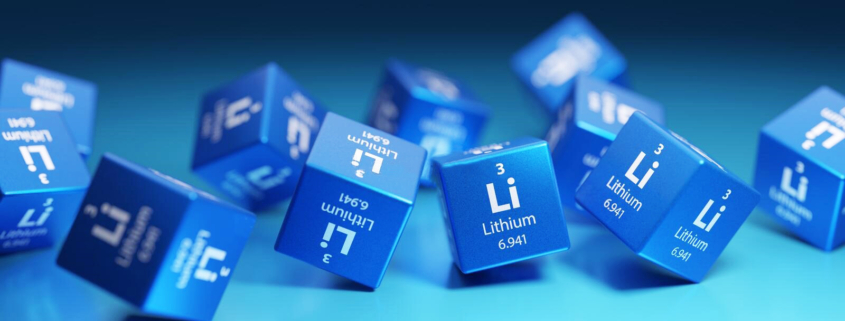China’s Lithium-ion Battery Export Industry Report 2022
In 2022, China’s lithium battery exports were nearly 342.66 billion yuan.
Lithium battery products are becoming a new growth point for China’s foreign trade exports.
According to statistics from the General Administration of Customs of China, the export value of lithium-ion batteries in China was close to 342.656 billion yuan in 2022, an increase of 86.7% compared with 183.526 billion yuan in 2021. Compared with the growth rate of 66.5% in 2021, the growth rate in 2022 has also increased significantly by 20.2 percentage points.
From the perspective of export countries, the top five countries in domestic lithium battery exports in 2022 are the United States, Germany, South Korea, the Netherlands and Vietnam, accounting for 57.6% of the total export value. Among these, the amount of domestic lithium batteries exported to the United States was 68.21 billion yuan, year-over-year increase of 112%, 52.33 billion yuan and 35.47 billion yuan exported respectively to Germany and South Korea.
The United States has become the largest exporter of China’s lithium batteries for three consecutive years, accounting for about 19.9%.
On February 2, Li Xingqian, director of the Foreign Trade Department of the Ministry of Commerce, said that last year, represented by the export of electric vehicles, photovoltaic products, and lithium batteries, Chinese high-tech, high value-added products that lead green transformation have become new growth points for exports.
According to data previously released by EVTank, a domestic information organization, the overall global lithium battery shipments in 2022 was 957.7GWh, a year-over-year increase of 70.3%. In 2022, China’s lithium-ion battery shipments reached 660.8GWh, a year-over-year increase of 97.7%, accounting for 69.0% of the global lithium-ion battery shipments. In 2021, China’s lithium-ion battery shipments accounted for 59.4%.
According to EVTank analysis, in the next ten years, lithium-ion batteries will still be the main battery technology route in the field of new energy vehicles and energy storage. By 2030, the global sales of new energy vehicles will reach 52.12 million, the development of the energy storage industry will also greatly stimulate the demand for lithium-ion batteries. EVTank predicts that by 2025 and 2030, global lithium-ion battery shipments will reach 2211.8GWh and 6080.4GWh respectively, with a compound growth rate of 22.8%.
In 2022, lithium carbonate imports increased by 68% year-over-year.
It is worth noting that, corresponding to the substantial increase in lithium battery exports, China’s imports of battery raw materials lithium concentrate and lithium carbonate also increased significantly in 2022.
According to custom data, from January to December 2022, China imported about 2.84 million tons of lithium concentrate, mainly from Australia, Brazil, Zimbabwe, Canada and other countries, an increase of about 42% year-over-year. In 2022, the annual import of lithium carbonate reached 136,000 tons, a year-over-year increase of 68%, and the growth rate increased by 6.3 percentage points compared with 2021. An increase of about 72%.
In 2022, the apparent consumption of lithium carbonate in China will reach 474,300 tons, and the import dependence of lithium carbonate was 26.2%.
Among them, lithium carbonate from Chile was 12.17 tons, accounting for 89.5% of the total imports; lithium carbonate from Argentina was 12,800 tons, accounting for 9.4% of the total imports. The combined lithium carbonate imports of the two countries accounted for 98.9% of the total imports.
Shanghai is the province with the highest import volume of lithium carbonate in China. According to statistics from Shanghai Customs, in 2022, the cumulative import of lithium carbonate, a raw material for lithium batteries, in Shanghai was 84,000 tons, a year-over-year increase of 89.9%.
In addition, China’s net export of lithium hydroxide was 90,300 tons in 2022, a year-over-year increase of about 29%.
At present, China has become the world’s largest exporter of lithium hydroxide, and more than 95% of its products are exported to Japan and South Korea. Among them, lithium hydroxide exported to South Korea has surpassed that of Japan, accounting for 63%.
Why is China a net importer of lithium carbonate, but a net exporter of lithium hydroxide? According to the analysis of Shanghai Nonferrous Network, lithium hydroxide is mainly used as a raw material for high-nickel ternary lithium batteries, and more production and consumption in foreign markets Most of them are high-nickel batteries and supporting cars. On the contrary, the domestic demand for lithium hydroxide is relatively limited, but more than 90% of the world’s current lithium hydroxide smelting capacity is concentrated in China, this has resulted in differences in the supply and demand structures of the two markets at home and abroad.
China has become a net importer of lithium carbonate since May 2019. At that time, with the rapid decline in domestic lithium carbonate prices, a large number of overseas lithium carbonate products flooded into the Chinese market, many overseas salt lake companies also focused on the Chinese market for lithium carbonate sales.
In addition, the lithium products extracted from salt lakes in South America are basically lithium carbonate, and the integrated production capacity of salt lake resources and lithium processing is mature, so the average price of imported lithium carbonate is far lower than the domestic spot price of lithium carbonate. Taking December 2022 as an example, the average import price of lithium carbonate in that month was 384,700 yuan/ton, which was far lower than the domestic battery-grade lithium carbonate price of about 500,000 yuan/ton in December.
According to the forecast of industry organizations, with the increase of production by leading lithium extraction enterprises in South American salt lakes and the continued expansion of China’s domestic lithium battery production capacity, the demand for raw materials will increase. From 2023 to 2032, China’s lithium carbonate imports will continue to grow.




